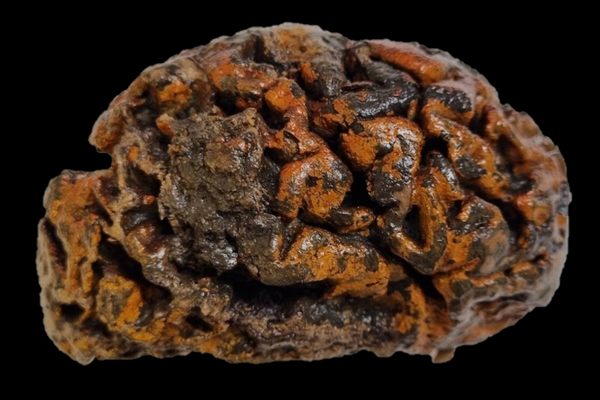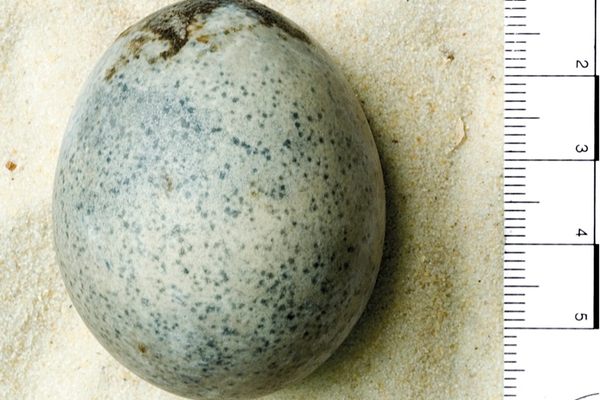Why Scientists Are Mixing Wasabi and Ancient Papyrus
Vapors from the delicious food have a surprising effect.
Conserving ancient artifacts is a difficult task, and perhaps no one knows this better than the conservators of ancient Egyptian papyrus—the oldest surviving samples of which are almost 5,000 years old.
When not stored in a place that’s controlled for temperature and humidity, ancient papyrus can become colonized by fungi species, which deteriorate the organic matter. These fungi can be difficult to remove without further damaging the papyrus. But now a team of researchers primarily based in Egypt have found a way to safely and effectively remove fungus from papyrus, without harming any pigments: using the Japanese plant wasabi.
This wasabi is not the paste you might typically see alongside sushi dishes. True Wasabia japonica, though edible and delicious, is actually quite rare and is sometimes ground into a powder. Researchers placed infected papyri inside a sealed chamber next to a simple mixture of wasabi powder and water. That mixture let off vapors in the air, and after three days, the researchers observed that this simple exposure to wasabi vapors could eradicate fungi in their papyrus samples.
Author Hanadi Saada, a microbiologist at the Grand Egyptian Museum, first became interested in wasabi in 2014, when she went to Japan. After learning about wasabi’s antimicrobial powers, which are well-established in research, Saada made sure to stop at a grocery store to buy a bag of pure wasabi powder to bring back to Egypt.

Saada began experimenting with wasabi as a potential treatment for papyrus. It became clear to her that “not only can wasabi kill microbes on papyrus without leaving any side effects, it can improve the tensile strength of the papyrus,” she said. To prove the efficacy of wasabi, Saada and her colleagues did not use ancient papyri—they prepared modern papyrus samples by painting them different colors, then heating them over months to simulate the natural aging process. They then exposed these samples to different fungal species.
To rid the fungi from these samples, the team developed their wasabi protocols: First, they dried out any hints of moisture from the papyrus. They then swabbed, cultivated, and incubated the fungi culture in their lab—the degree of proliferation indicated the severity of the infection, and that measure was used to calculate how concentrated their wasabi mixture had to be. They then placed their infected papyrus in a vacuum-sealed chamber, placed next to a freshly prepared mix of wasabi and distilled water. “The wasabi emits fumes, and those fumes are able to eradicate the microbial infection,” Saada says.
Not much has been studied or written about fungi and papyrus, says Saada. The development of this method is exciting, she says, because it’s a relatively easy and cheap technique that does not require synthetic chemicals, making it better for the papyrus but also for the health of the people who do this work. Plus, the average papyrus sample with a moderate to severe fungal infection only requires about 20 to 25 grams of wasabi powder.

Marieka Kaye, the director of preservation services for physical collections at the University of Michigan—which holds the largest papyrus collection in North America—says she remains a little wary and skeptical. It’s true that “there has been nothing published about this before,” she says, “but that’s because it isn’t really a problem.” In all her years of working with papyrus, “I’ve never heard anyone talk about mold being an issue,” Kaye says, though it’s certainly a problem with books and other regular paper materials.
Tried and true methods for addressing fungus in conservation is to use HEPA filtered vacuums and then an ethanol solution mist. The paper states “Natural biocides are considered safer for human beings and greener for the environment,” but Kaye questions whether using wasabi truly is that much better for human health over ethanol, and would like to see more granular research to back it up. She also notes that in this new study, researchers tested their methods on new papyrus that was artificially aged—it would be interesting to see whether the same results are seen when “testing on the real deal,” she adds.
In spite of these caveats and limitations, Kaye says it is exciting to see this sort of innovation and out-of-the-box thinking. “We always want to find new tools, new techniques, and new ideas to bring to our work.” After all, she says, “papyrus is basically the oldest thing a conservator will work on—it’s very precious.”
Gastro Obscura covers the world’s most wondrous food and drink.
Sign up for our regular newsletter.























Follow us on Twitter to get the latest on the world's hidden wonders.
Like us on Facebook to get the latest on the world's hidden wonders.
Follow us on Twitter Like us on Facebook